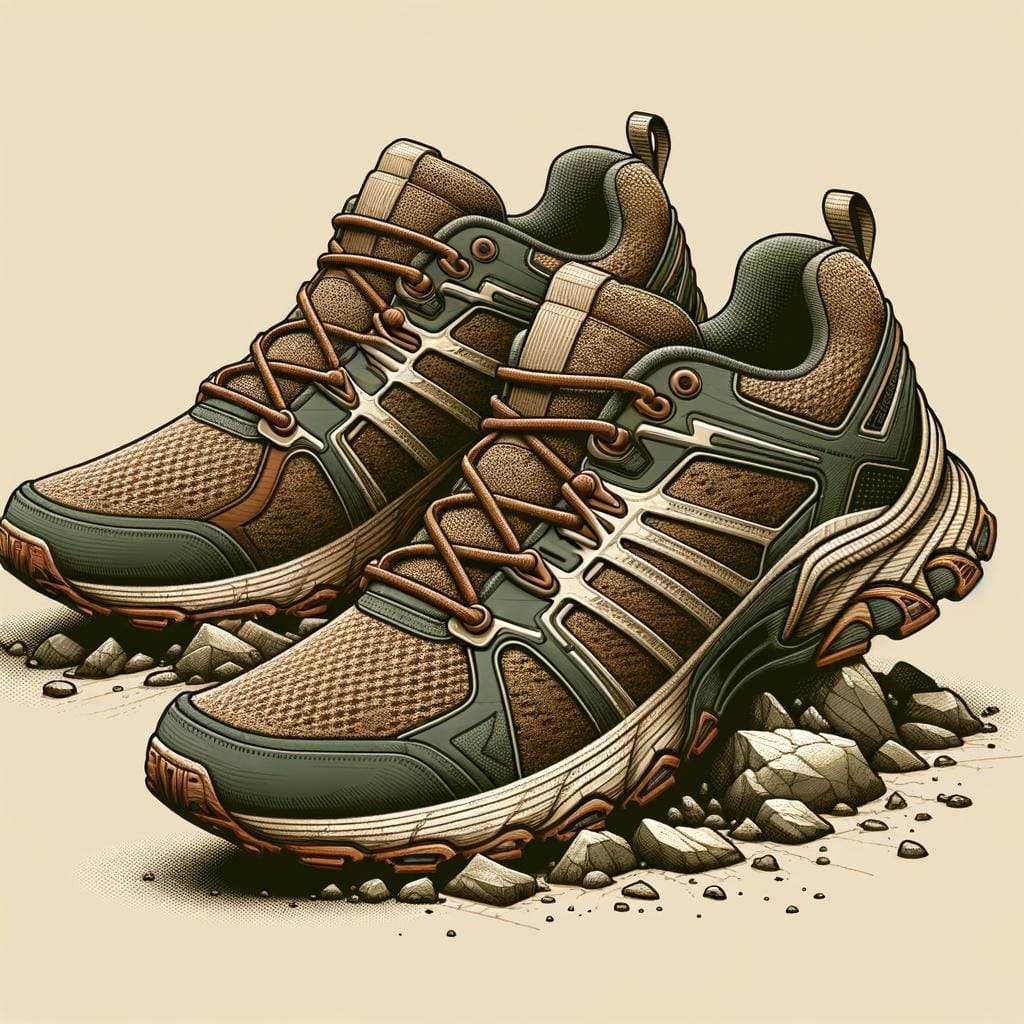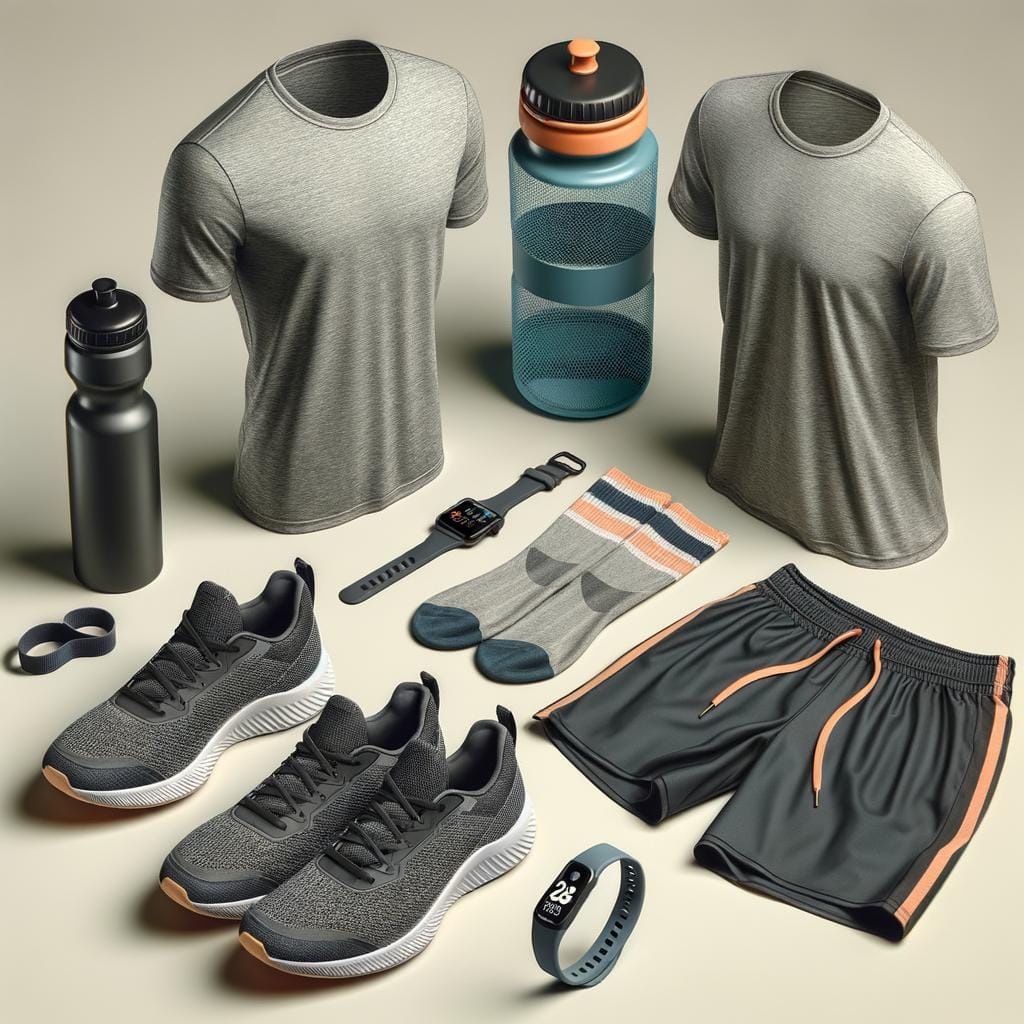Trail running has gained popularity among fitness enthusiasts and outdoor adventurers alike, offering a unique and challenging way to experience nature while staying active. One key component that can make or break your trail running experience is the footwear you choose. The right footwear for trail running can provide the necessary support, traction, and comfort to help you navigate uneven terrain and unpredictable conditions.
When hitting the trails, it’s important to understand the basics of trail running to have a safe and enjoyable experience. Unlike road running, trail running involves tackling various terrains like rocky paths, muddy trails, and steep inclines. This makes having the right footwear essential to protect your feet from potential injuries and discomfort during your runs.
Choosing the proper trail running shoes involves considering factors such as traction, stability, cushioning, fit, and durability. Selecting shoes that cater to your individual preferences and specific trail conditions can enhance your performance and overall enjoyment on the trails. By investing in quality footwear designed for trail running, you can optimize your experience while minimizing the risk of injuries along the way.
Benefits of Using Proper Footwear for Trail Running
When it comes to trail running, one of the most crucial elements to consider is the footwear you choose to wear. Proper footwear can make a significant difference in your performance, comfort, and overall experience on the trails. Here are some key benefits of using the right footwear for trail running:
- Enhanced Protection: Trail running shoes are specifically designed to provide extra protection and support for rugged and uneven terrain. With features like reinforced toe caps, rock plates, and durable outsoles, these shoes help protect your feet from potential injuries such as bruising or stubbing toes on rocks and roots.
- Improved Traction: Trail running shoes are equipped with aggressive tread patterns that offer superior grip on muddy, rocky, or slippery surfaces. This enhanced traction not only helps prevent slips and falls but also allows you to confidently tackle challenging terrain without hesitation.
- Increased Stability: The design of trail running shoes typically includes features like a lower heel-to-toe drop and a wider platform for added stability on uneven surfaces. This stability not only helps improve your balance but also reduces the risk of rolling an ankle while navigating tricky trails.
In addition to these benefits, using proper footwear for trail running can also contribute to better overall performance and enjoyment during your runs. By investing in high-quality trail running shoes that are well-suited to your foot type and running style, you can minimize discomfort, reduce fatigue, and maximize your potential on every outing.
Remember that when it comes to choosing footwear for trail running, it’s essential to prioritize functionality over aesthetics. While style is important, the most important factors include fit, support, protection, traction, and stability – all of which play a crucial role in keeping you safe and comfortable while exploring rugged outdoor terrain. By selecting the right footwear for trail running based on these considerations, you can set yourself up for success and elevate your outdoor adventures to new heights.
Important Factors to Consider When Choosing Trail Running Shoes
When it comes to choosing the right footwear for trail running, there are several important factors to consider to ensure a comfortable and successful running experience. One key factor to keep in mind is the type of terrain you will be running on. Different trails may require different features in your shoes, such as more aggressive treads for muddy or rocky terrain, or added stability for technical trails with uneven surfaces.
Another critical factor to consider is the level of cushioning and support provided by the shoes. Depending on your personal preferences and running style, you may opt for either minimalist trail running shoes that offer a more natural feel and lower profile, or cushioned shoes that provide additional shock absorption and protection on longer runs. It’s essential to find a balance between cushioning and flexibility that works best for your individual needs.
Additionally, the fit of your trail running shoes is paramount in ensuring comfort and preventing injuries. Be sure to choose a shoe size that allows for some extra room in the toe box to accommodate any swelling that may occur during longer runs. It’s also recommended to try on shoes later in the day when your feet are slightly swollen, as this can give you a better idea of how they will fit during your runs.
| Trail Running Shoe Factor | Considerations |
|---|---|
| Terrain | Choose appropriate treads and stability based on trail type. |
| Cushioning vs Minimalist | Decide based on preference for support and flexibility. |
| Fit | Select size with extra room in toe box; try on later in day. |
Tips for Properly Fitting Trail Running Shoes
When it comes to trail running, having the right footwear is crucial for a successful and enjoyable experience on the trails. One of the key factors in ensuring you have the best shoes for your trail running adventures is making sure they fit properly. Ill-fitting shoes can lead to discomfort, blisters, and even injuries, so taking the time to find the right fit is essential.
Taking Proper Measurements
Before purchasing trail running shoes, it’s important to accurately measure your feet. Feet can change in size over time, so it’s recommended to measure both feet while standing and to go shoe shopping later in the day when your feet are slightly swollen. This will help ensure you get the most accurate measurements for finding the perfect fit.
Consider Trying Different Brands and Models
Every brand and model of trail running shoe fits differently, so don’t be afraid to try on several options before making a decision. It’s also helpful to visit a specialty running store where staff can assess your gait and make recommendations based on your specific needs. Trying on different brands and models can give you a better idea of what feels comfortable and supportive for your feet during trail runs.
Ensure Proper Fit
When trying on trail running shoes, ensure there is enough room in the toe box for wiggle room but not too much that your foot slides around inside the shoe. Your heels should feel snug and secure without any slipping, as this can cause friction and lead to blisters.
Additionally, check that the shoes provide ample support and cushioning for your arches and ankles to prevent any strain or discomfort during long runs on uneven terrain. By ensuring proper fit, you’ll be setting yourself up for a successful and enjoyable trail running experience.
Comparison Between Minimalist and Cushioned Trail Running Shoes
Trail running is a demanding activity that requires specialized footwear to ensure maximum performance and safety. When it comes to choosing the right footwear for trail running, one of the key decisions that runners face is whether to opt for minimalist or cushioned trail running shoes. Both types have their own set of advantages and considerations that can significantly impact your overall running experience.
Minimalist trail running shoes are known for their lightweight and flexible design, which allows for a more natural range of motion while running on rugged terrain. These shoes typically have a lower profile with less cushioning and a lower heel-to-toe drop. Minimalist shoes promote a more direct connection with the ground, which can help improve proprioception and strengthen foot muscles over time. This style of footwear is preferred by runners who prioritize ground feel and agility.
On the other hand, cushioned trail running shoes offer more protection and shock absorption, making them suitable for longer distances or runners who prefer added comfort on rough trails. These shoes feature ample padding in the midsole to cushion each step and reduce fatigue during extended runs.
Cushioned trail running shoes are designed to provide support and stability on uneven surfaces, making them a popular choice among runners looking for extra protection from rocks, roots, and other hazards on the trail.
Considering the terrain you plan to run on, your running form, and personal preferences are crucial when deciding between minimalist and cushioned trail running shoes. It’s essential to try on different styles and models to determine which type of footwear best suits your needs before hitting the trails. Investing in the right pair of trail running shoes can enhance your performance, prevent injuries, and ultimately make your off-road adventures more enjoyable.
| Minimalist Trail Running Shoes | Cushioned Trail Running Shoes |
|---|---|
| Lightweight design | More protection and shock absorption |
| Less cushioning | Ample midsole padding |
| Promotes better proprioception | Provides support on rough trails |
How to Maintain and Care for Your Trail Running Shoes
Trail running shoes are an essential investment for any trail runner, providing the necessary support and protection on rugged and uneven terrains. To ensure longevity and optimal performance of your footwear for trail running, it is crucial to properly maintain and care for them. Here are some essential tips to help you keep your trail running shoes in top condition:
- After each run, remove any dirt or debris from your shoes using a soft brush or damp cloth. This will prevent buildup that can cause premature wear and tear.
- Avoid machine washing your trail running shoes as this can damage the materials and affect the structure of the shoe. Instead, hand wash them with mild soap and water when needed.
- Allow your shoes to air dry naturally after cleaning them. Avoid direct heat sources like radiators or dryers, as high temperatures can warp the materials of the shoe.
Proper maintenance also includes regularly checking for signs of wear and tear that may require repairs or replacements. Inspect the outsole for excessive wearing down, look for tears in the upper material, and check if the cushioning still provides adequate support. By addressing these issues promptly, you can extend the lifespan of your trail running shoes and continue enjoying their benefits on outdoor adventures.
- Rotate between multiple pairs of trail running shoes if possible to give each pair time to decompress and dry out between runs.
- Store your trail running shoes in a cool, dry place away from direct sunlight when not in use. This will help prevent odor build-up and maintain the integrity of the materials.
In addition to regular cleaning and inspection, consider reapplying waterproofing treatments to keep your feet dry during wet conditions on the trails. Following these maintenance tips will not only prolong the life of your footwear for trail running but also ensure that they continue to provide you with comfort and support on all your outdoor excursions.
Conclusion
In conclusion, investing in quality footwear for trail running is essential for ensuring a successful and enjoyable experience on the trails. By using proper trail running shoes, you can not only enhance your performance but also reduce the risk of injuries. Choosing the right pair of shoes that are designed specifically for the demands of trail running can make a significant difference in your overall comfort and stability while out on the trails.
When considering footwear for trail running, it is important to take into account important factors such as fit, cushioning, traction, and durability. Properly fitting trail running shoes can prevent blisters and discomfort during long runs, while adequate cushioning can provide protection from rough terrain.
Additionally, a good grip and durable outsole are crucial for maintaining stability and traction on uneven or slippery surfaces. Investing in high-quality footwear tailored to the demands of trail running will not only improve your performance but also help prevent potential injuries.
Frequently Asked Questions
What Shoes to Wear on Trail Run?
When it comes to choosing shoes for trail running, it’s important to consider the terrain you’ll be running on. Look for shoes with good traction to help prevent slips and falls on various surfaces like rocks, mud, and loose gravel.
It’s also beneficial to have shoes with solid protection for your feet to shield against sharp objects on the trail.
Do I Need Special Shoes for Trail Running?
While you don’t necessarily need special shoes specifically designed for trail running, they do offer advantages that can enhance your experience. Trail running shoes are built with features like rugged soles, durable uppers, and added stability to withstand the challenges of off-road terrain better than regular running shoes.
They provide a layer of protection and support that can make your runs more comfortable and safer.
What Is the Difference Between Trail Running Shoes and Running Shoes?
The main difference between trail running shoes and regular running shoes lies in their design and construction. Trail running shoes are typically sturdier with thicker soles and aggressive tread patterns to provide better grip on uneven surfaces.
They often have protective elements like toe guards and reinforced uppers to shield against debris encountered on trails. In contrast, traditional running shoes prioritize cushioning and flexibility for smoother surfaces like roads or tracks, which may not hold up well on rough trails.

An avid outdoor enthusiast, writer, and environmental advocate who has spent over two decades exploring the world’s most breathtaking landscapes. With a background in environmental science and a passion for adventure, Frances combines her love for nature with her talent for storytelling to inspire others to embark on their own outdoor journeys.





